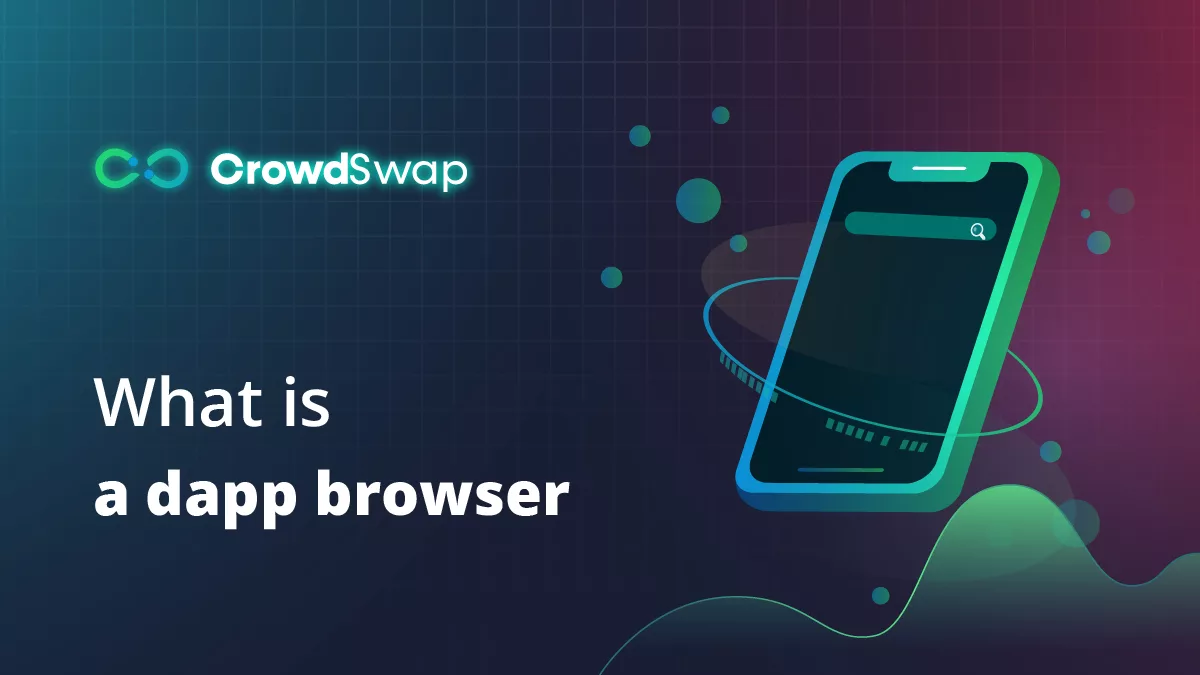The DeFi space is continuously evolving, and dApps are at the center. As crypto adoption grows among individuals and businesses, tools for handling and transferring digital assets are increasingly becoming more important. One such tool worth taking a closer look at is dApp browsers. This article aims to explain what a dApp browser is and whether it offers a more efficient and user-friendly experience for interacting with dApps compared to standard traditional web browsers.
What is a Dapp Browser?
A dApp browser, or a “Decentralized Application browser,” is a special type of web browser designed to work with blockchain-based applications. A standard browser connects to websites on centralized servers, and dApp browsers link users straight to decentralized platforms on the blockchain. This way, you will have a smooth engagement with smart contracts and secure financial transactions, providing a more transparent online experience. Basically, dApp browsers act as a portal to the decentralized web, allowing users to benefit from blockchain technology more smoothly and securely.
To understand the dApp browsers and their difference from traditional browsers, let us see an example:
Think of the internet as a vast library.
In one part of this library, to read a book, you approach the librarian for a certain book, let’s call it “CrowdSwap in DeFi”, the librarian goes to a massive storage room that contains millions of books, each with just a single copy. Searches for your book and brings it back to you. This situation mirrors the conventional internet, where sites reside on centralized servers, and when you wish to view a website, your browser, much like the librarian, gets the data from this central spot.
Now, let us look at a different part of this library. In this space, every guest has a copy of any book you desire, including “CrowdSwap in DeFi.” And when you decide to read this book, the librarian doesn’t go to the main storage. Instead, they collect information from various guests who all have duplicates. This process symbolizes dApps and the decentralized web. Instead of a single, central source, data and tasks are dispersed among numerous users, ensuring no single vulnerability or control point exists.
Some Features of dApp Browsers
- Decentralized Interactions: dApp browsers are designed to connect users to decentralized platforms on the blockchain directly. This bypasses centralized servers, enabling peer-to-peer interactions.
- Smart Contract Integration: One of the most important features of a dApp browser is the ability to interact smoothly with smart contracts. Which allows users to execute an exchange or a trade smoother, faster, and more secure.
- Secure Transactions: Enhanced security protocols ensure that users’ transactions and data remain private and safe from potential threats. Given the financial stakes typically linked to dApps, ensuring security is vital. Typically, Transactions in these browsers are encrypted, and private keys are often stored locally, reducing risks.
- Integrated Wallets: Many dApp browsers come with built-in crypto wallets. This establishes easy and immediate transactions, whether sending, receiving, or storing digital assets.
- Cross-Platform Compatibility: dApp browsers often support a wide range of blockchain ecosystems, not just limited to one. This multi-chain support broadens the user’s accessibility.
- User-Friendly Interface: While blockchain technology can be complex, dApp browsers usually try to prioritize usability. They aim to provide easy-to-use interfaces that would be appealing to any individual.
- Open Source & Community-Driven: Many dApp browsers are open source, allowing developers to contribute, refine, and introduce new features, fostering a community-driven approach.
4 benefits of using a dApp Browser
1. Easier Interaction
dApp browsers are designed for the decentralized web, providing users with a steady connection with dApps.
2. Enhanced Privacy
DApp browsers place a premium on safeguarding user data, ensuring private information remains confidential unless given explicit permission.
3. Direct Decentralized Web Access from your wallet
DApp browsers serve as gateways to the decentralized web, and more often, crypto wallets come with them so it not only eliminates the security threats but also makes it easier and faster for users to access dApps since all the operations are done in just their wallet.
4. Censorship Resistance
Dapp browsers grant access to a version of the internet where content isn’t easily subjected to censorship by governmental or corporate entities.
Where can you find dApp Browsers?
As previously mentioned, typically, dApp Browsers are integrated with a crypto wallet. To highlight some of the most famous ones, one can think of MetaMask wallet, Trust wallet, and Coinbase wallet.
Read more: How to install MetaMask?
How to use a dApp browser?
In this example, we’ll walk you through the process of using the MetaMask wallet’s dApp browser to access the CrowdSwap application step by step.
Step one: open your MetaMask wallet and choose the wallet you want to use for your transaction
Step two: To access the browser, simply tap the browser icon on the tab bar below the screen.

Step three: Open a new tab using the magnifying glass icon, and type app.crowdswap.org in the type bar.
Step four: tap on the “Connect Wallet” button located on top of your screen. And if a confirmation request appears, hit “Connect” to confirm the connection.
Step five: your wallet is now connected and you can exchange or invest your tokens easily.
Trade Effortlessly
Ready to dive deeper? Our crypto exchange is simple and user-friendly, making trading a breeze
Conclusion
In conclusion, dApp browsers offer a more streamlined, secure, and transparent way of accessing the decentralized web than traditional browsers. With enhanced security, built-in cryptocurrency wallets, and the ability to interact with smart contracts much smoother, they represent an advancement compared to traditional web browsers. For those invested in or curious about DeFi, DApp browsers are worth exploring.













